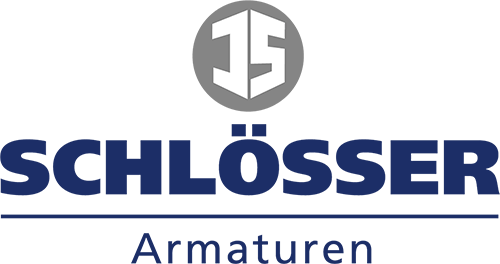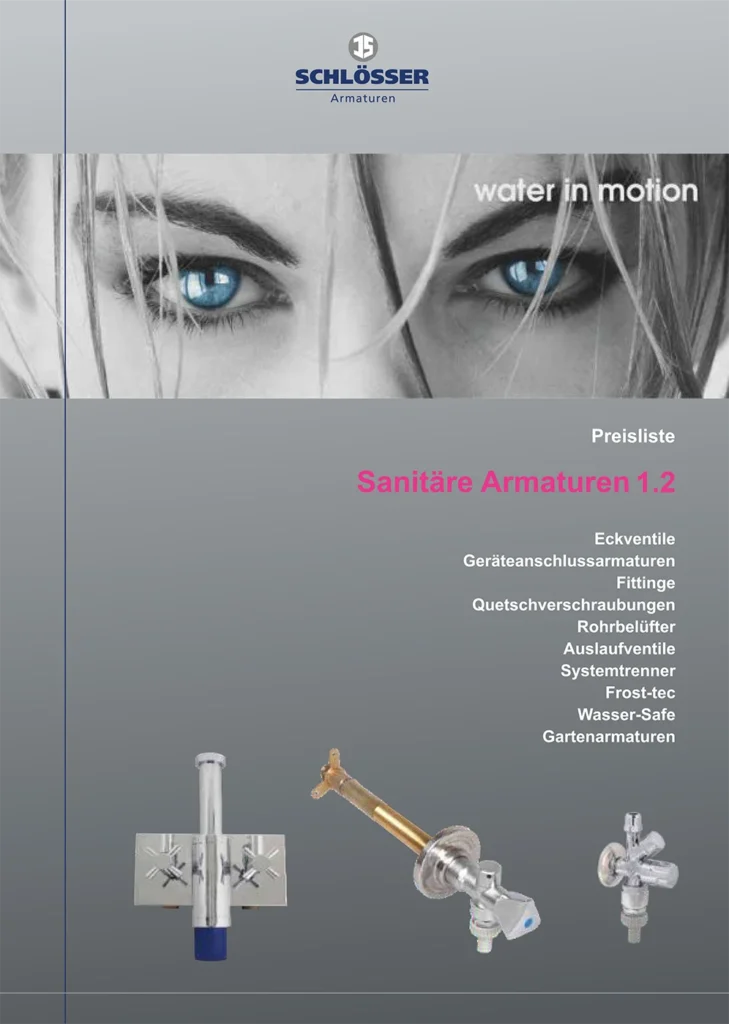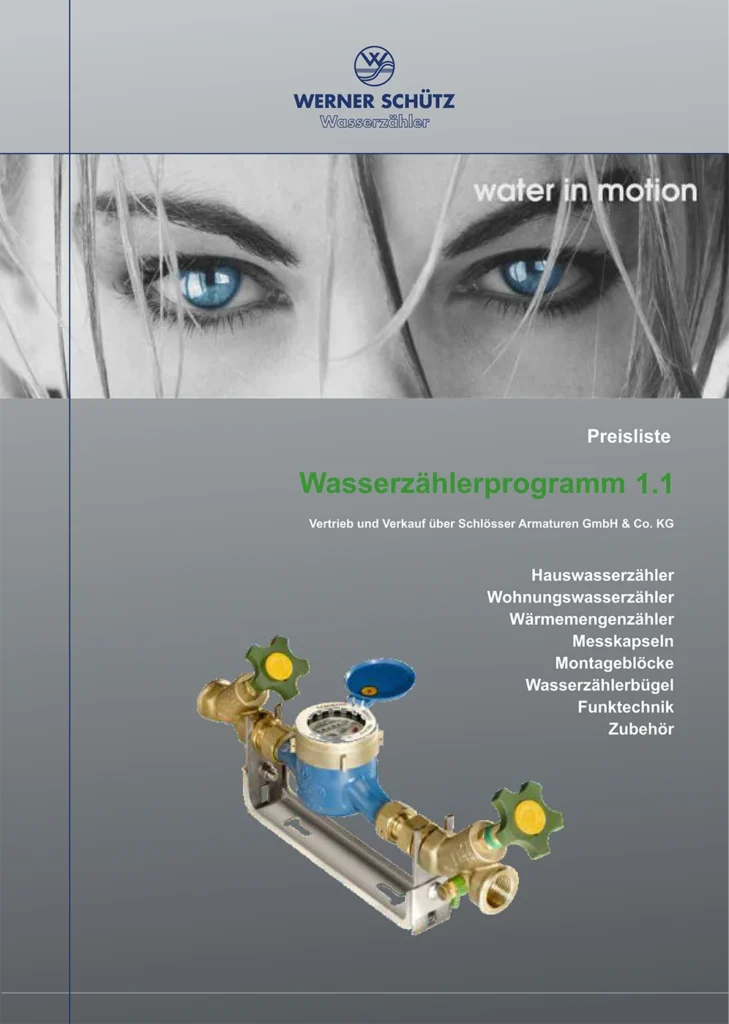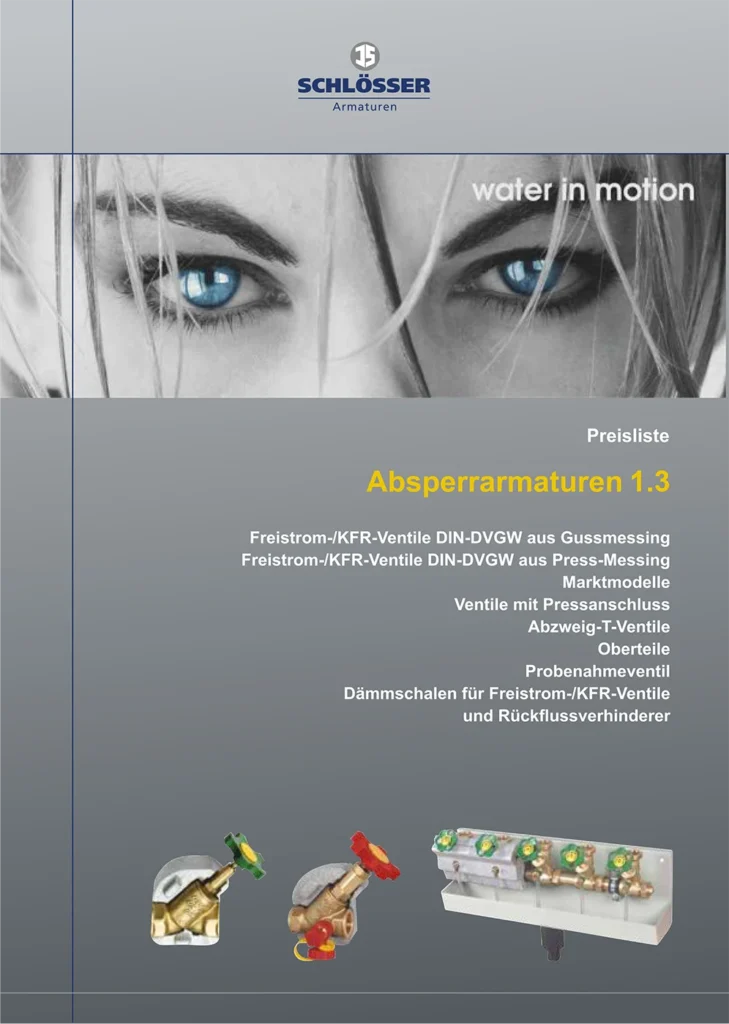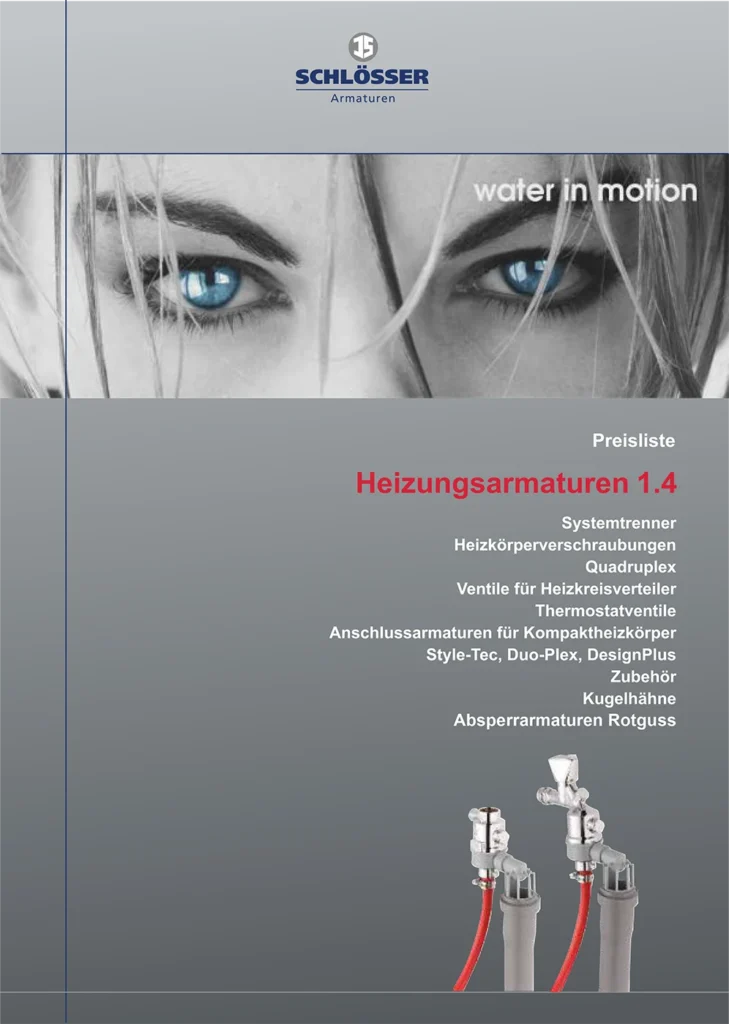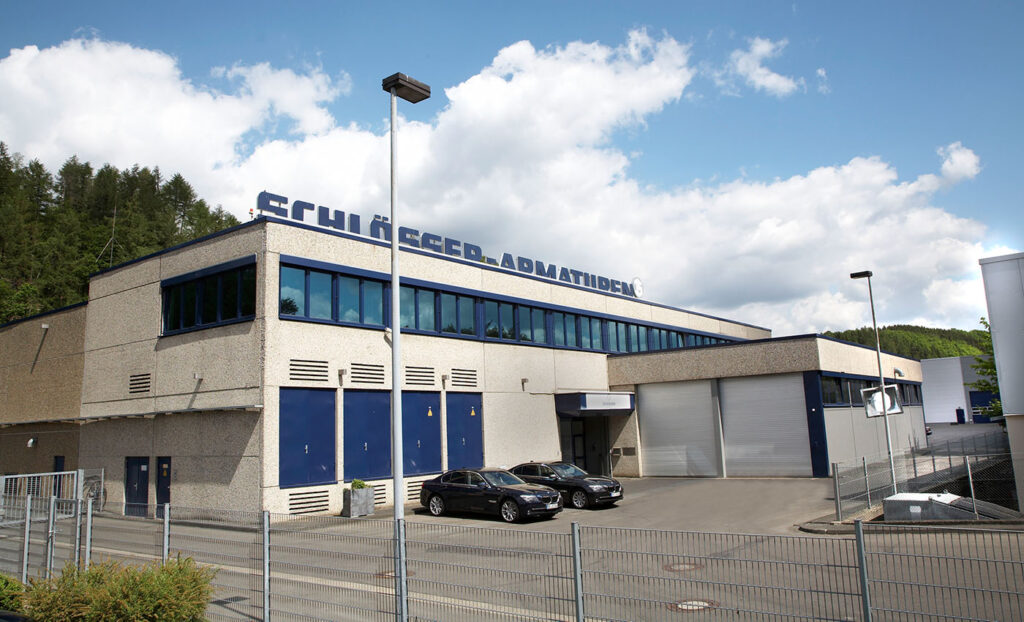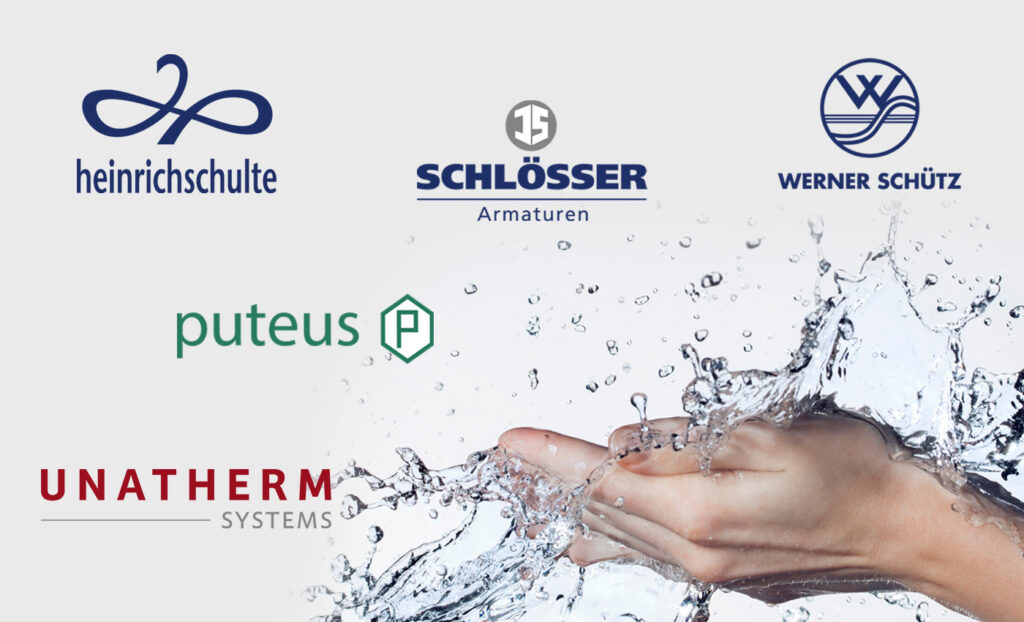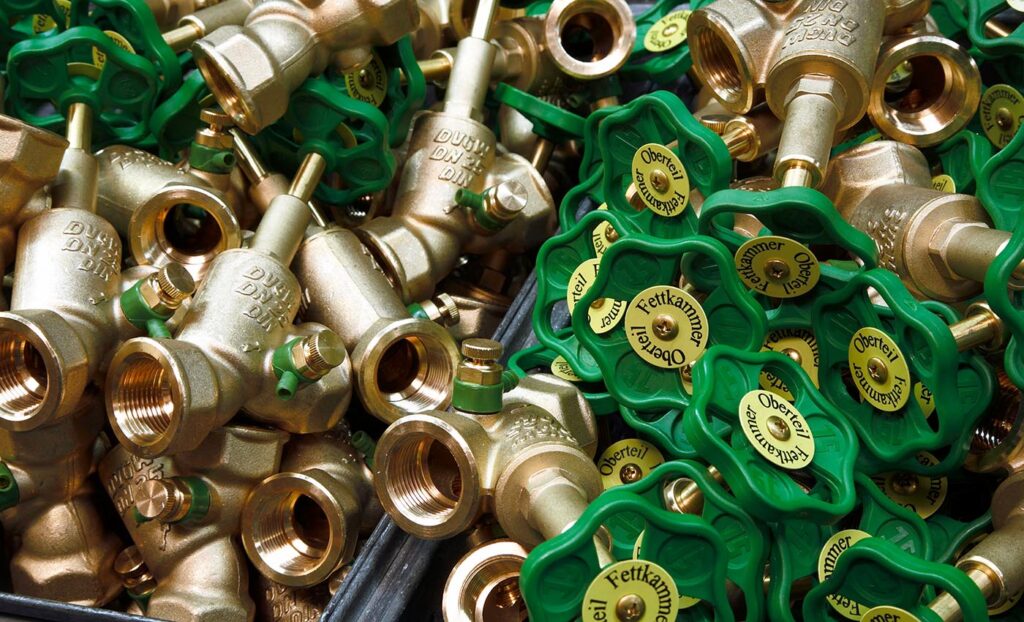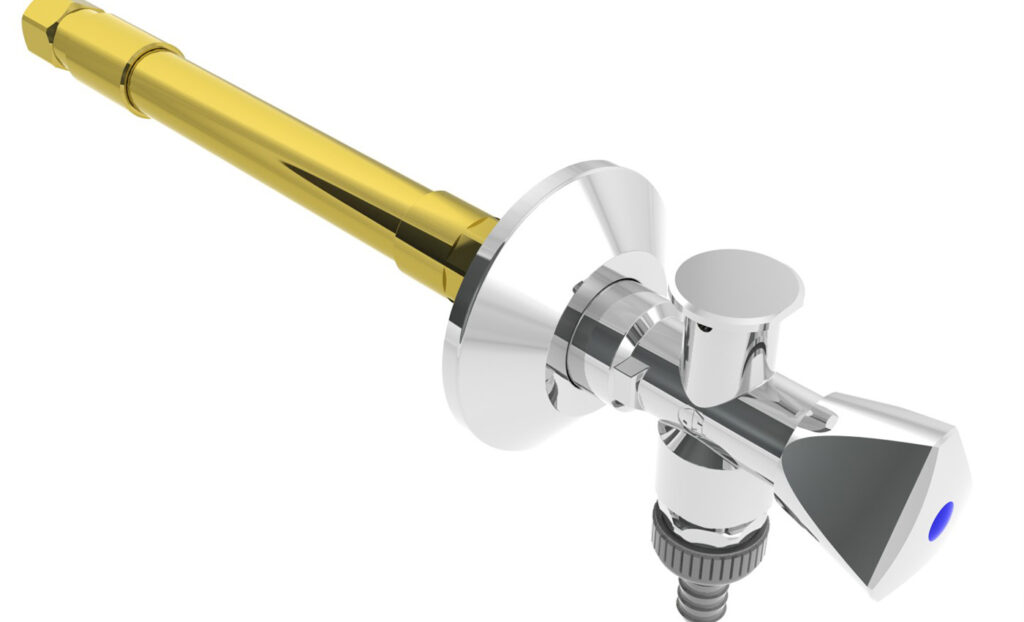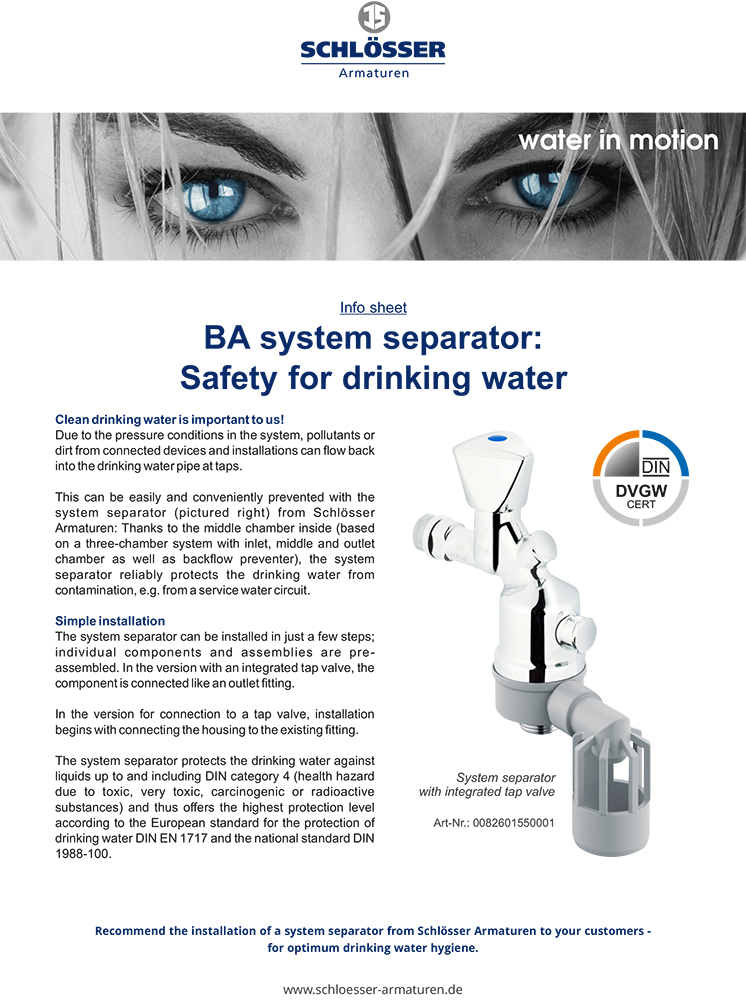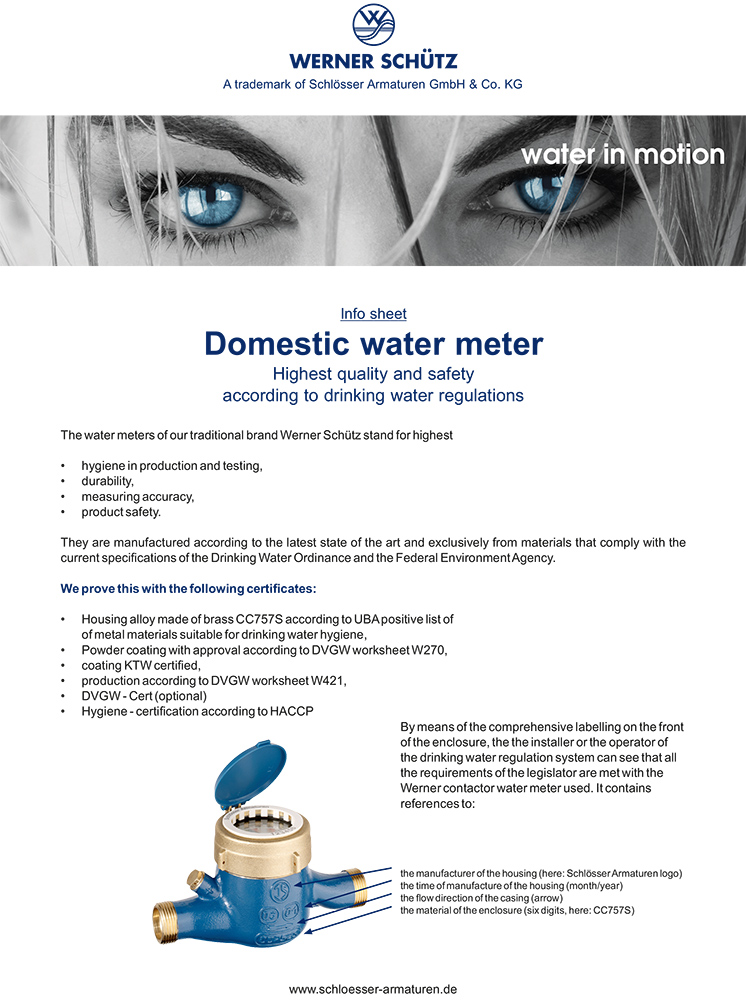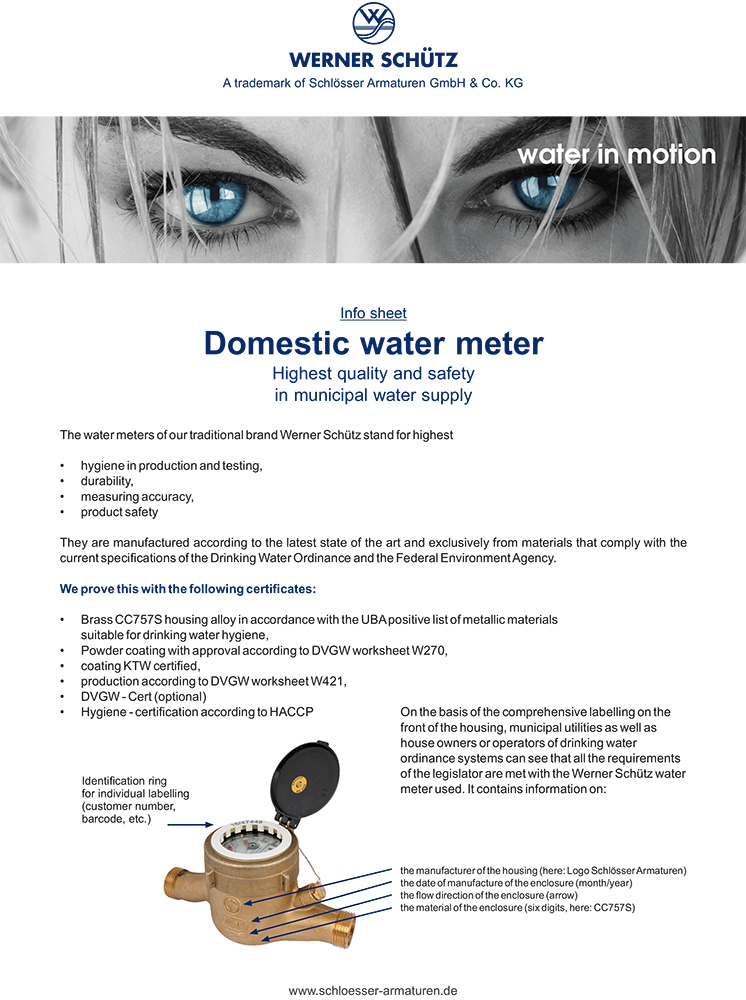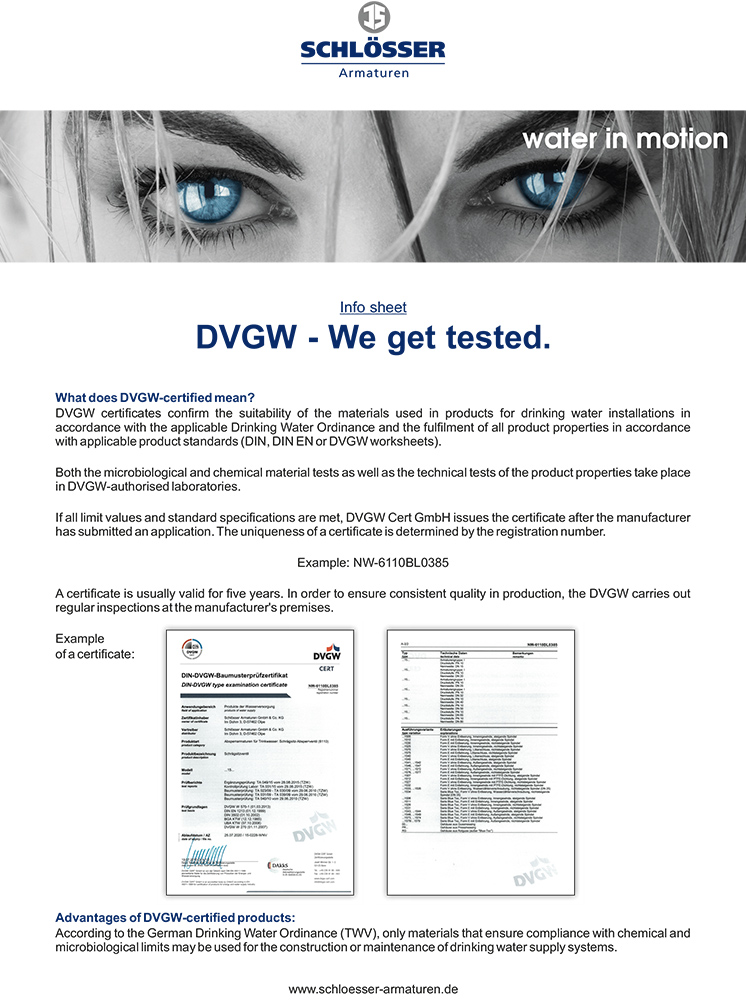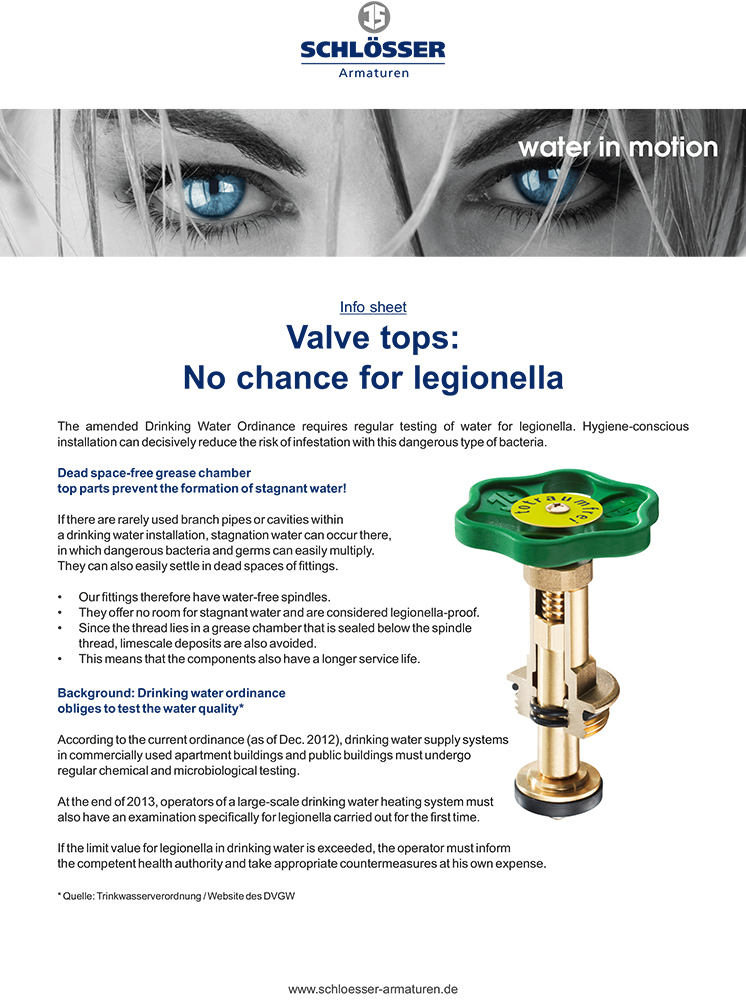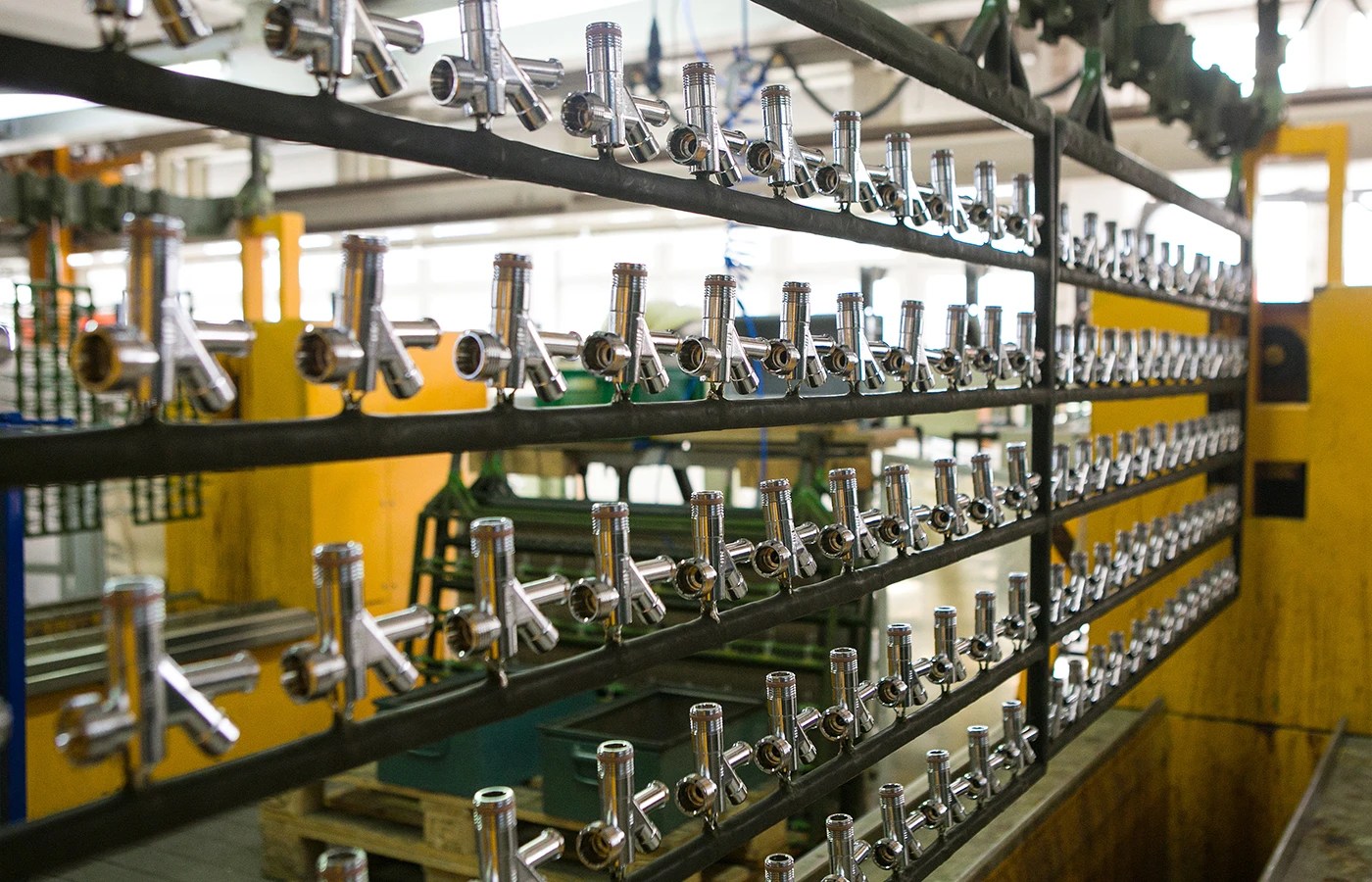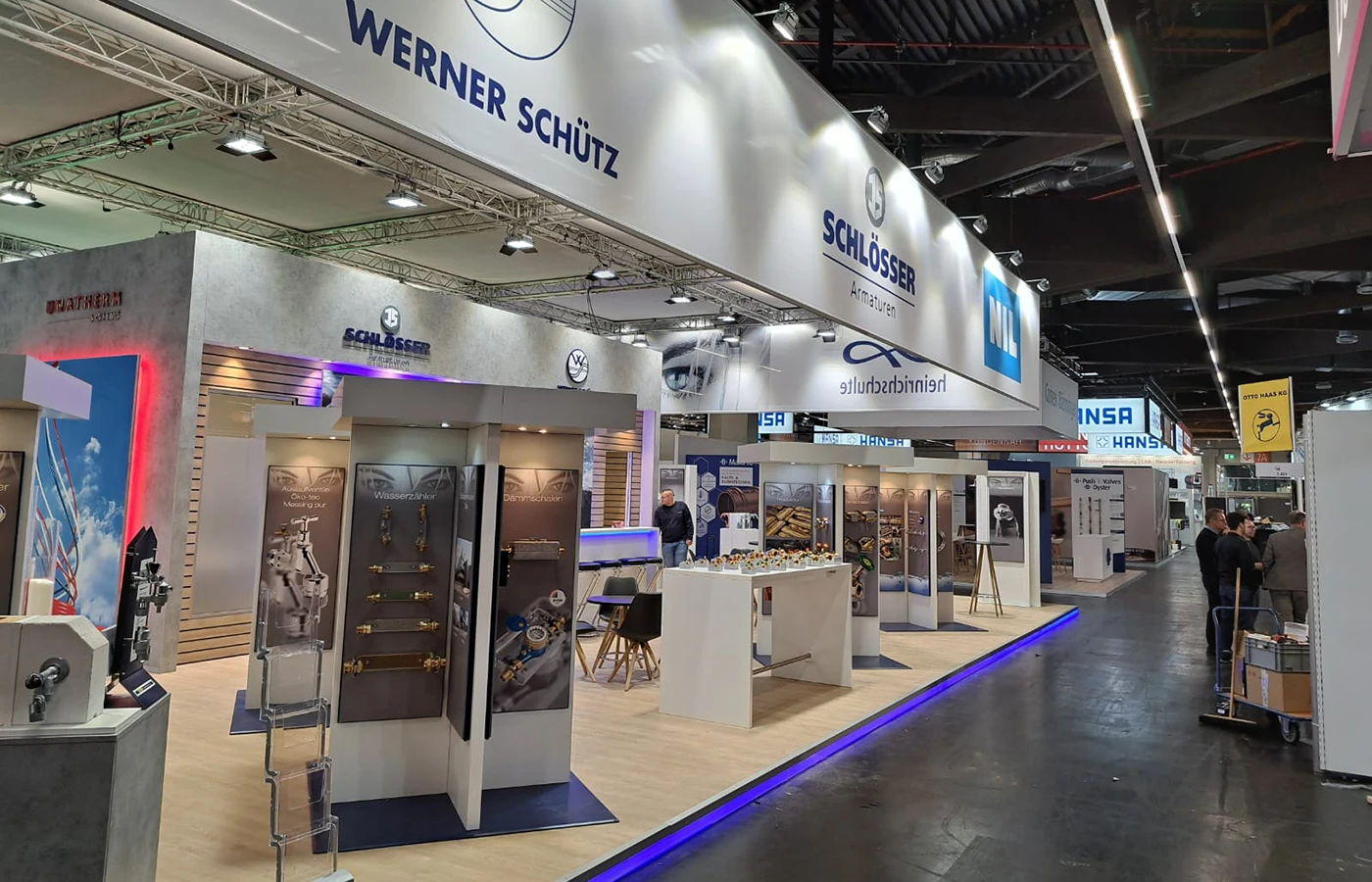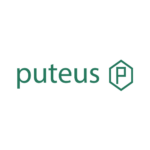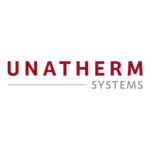Drinking Water Ordinance
In the case of products for drinking water installations, DVGW certificates confirm the suitability of the materials used in accordance with the applicable drinking water ordinance and the fulfillment of all product properties in accordance with applicable product standards (DIN, DIN EN or DVGW worksheets).
Consumer information
Drinking water ordinance and Federal Environment Agency (UBA) positive list affect all water-bearing components.
On the basis of the Drinking Water Ordinance, the Federal Environment Agency has drawn up an assessment basis for metallic materials in contact with drinking water.
This also contains the list (UBA positive list) of materials suitable for drinking water hygiene.
System separator
Clean drinking water is important to us!
At taps, the pressure conditions in the system can cause contaminants or dirt from connected devices and installations to flow back into the drinking water line.
This can be easily and conveniently prevented with the system separator (pictured left) from Schlösser Armaturen:
Thanks to the center chamber inside (based on a three-chamber system with inlet, center and outlet chambers as well as a backflow preventer), the system separator reliably protects the drinking water from contamination, e.g. from a service water circuit.
Easy installation
The system separator can be assembled in just a few steps, individual components and assemblies are pre-assembled. In the version with an integrated tap valve, the component is connected in the same way as an outlet fitting. In the version for connection to a tap valve, installation begins with connecting the housing to the existing fitting. The system separator protects drinking water against liquids up to and including DIN category 4 (health hazards due to toxic, very toxic, carcinogenic or radioactive substances) and thus offers the highest level of protection in accordance with the European standard for the protection of drinking water DIN EN 1717 and the national standard DIN 1988-100.
Domestic water meter: Highest quality and safety according to drinking water ordinance
With the amended Drinking Water Ordinance (TWV), new limit values for metallic residues and microbiological substances in drinking water have been set. Since December 1, 2013, for example, the limit value for lead in drinking water has been a maximum of 10 micrograms/liter.
According to the TWV, drinking water supply systems in commercially used apartment buildings and public buildings must undergo regular chemical and microbiological testing. If these tests show that the legal limits for traces of metals (for example, lead, cadmium, iron, copper, nickel, zinc) are exceeded, the homeowner or the operator of the system must inform the local health department and take appropriate countermeasures at his or her own expense.*
This means that the homeowner/operator and also the installer have a legal obligation: only components that ensure compliance with the TWV specifications may be used.
Highest quality and safety in municipal water supply
With the amended Drinking Water Ordinance (TWV), new limit values for metallic residues and microbiological substances in drinking water have been set. Since December 1, 2013, for example, the limit value for lead in drinking water has been a maximum of 10 micrograms/liter.
Drinking water supply systems in commercially used apartment buildings and public according to the TWV, buildings must undergo regular chemical and microbiological testing. Should these investigations show that the legal limits for metallic and microbiological traces are exceeded, the house owner or the operator of the plant must inform the public health department and take appropriate countermeasures at his own expense.*
Utilities, homeowners/operators, and likewise installers are thus in a position to
legal obligation: Only those components may be used that ensure compliance with the
Ensure TWV specifications!
DVGW -We are testing!
In the case of products for drinking water installations, DVGW certificates confirm the suitability of the materials used in accordance with the applicable drinking water ordinance and the fulfillment of all product properties in accordance with applicable product standards (DIN, DIN EN or DVGW worksheets).
Both the microbiological and chemical material tests and the technical tests of the product properties take place in DVGW-authorized laboratories. If all limit values and standard specifications are met, DVGW Cert GmbH issues the certificate after the manufacturer has submitted an application. The uniqueness of a certificate is determined by the registration number.
Example: NW-6110BL0385
A certificate is usually valid for five years. To ensure consistent quality in production, the DVGW regularly undertakes tests at the manufacturer’s premises.
No chance for legionella
The amended Drinking Water Ordinance stipulates regular testing of the water for legionella. With a hygiene-conscious installation, the risk of infestation with the dangerous bacterial species can be decisively reduced.
Dead space free grease chamber upper parts prevent formation of stagnation water!
If there are rarely used branch lines or cavities within a drinking water installation, stagnant water can occur there, in which dangerous bacteria and germs can easily multiply. They can also easily settle in dead spaces of fittings.
